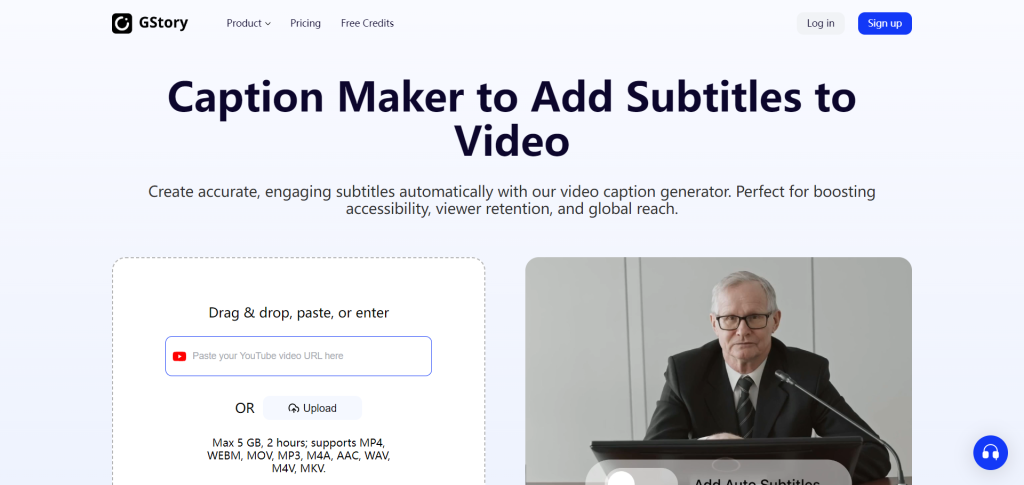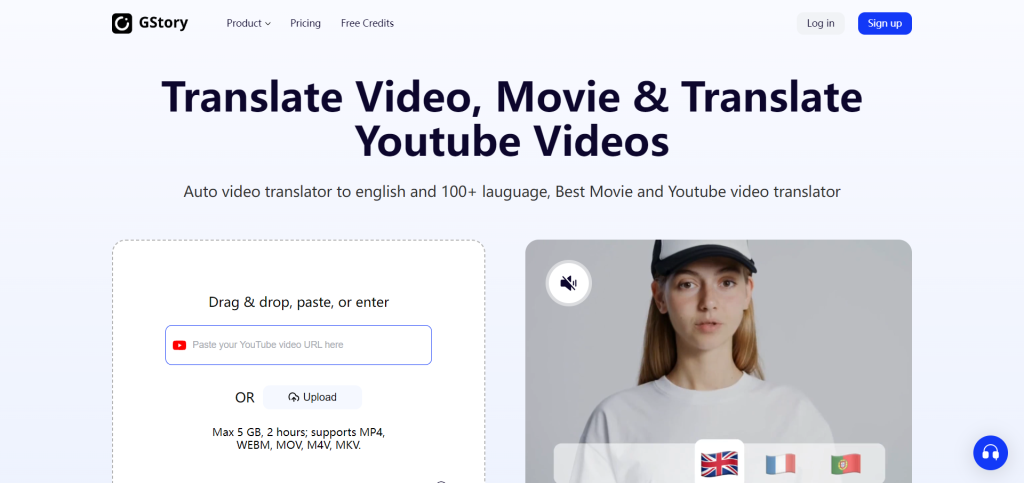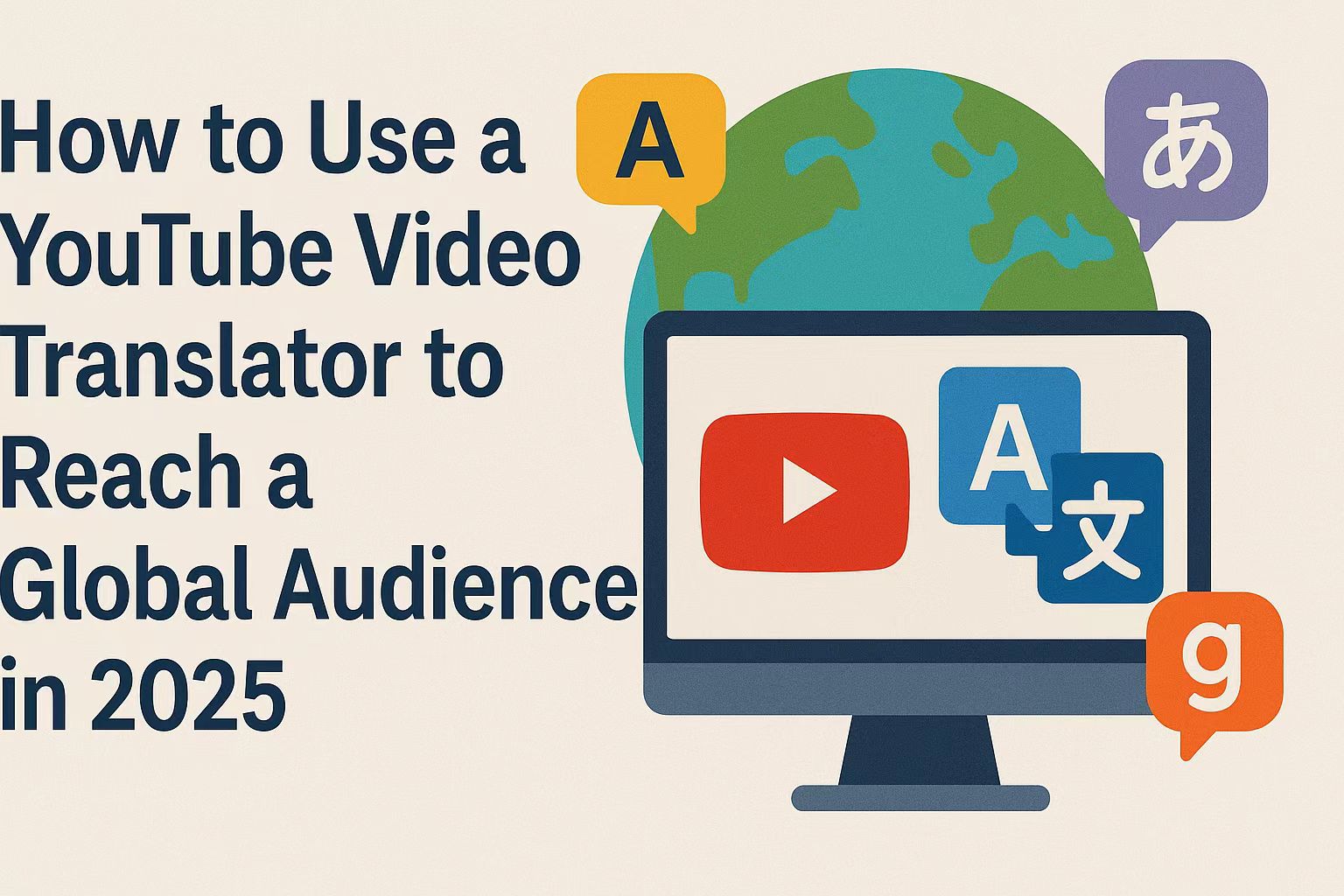Last Updated on September 11, 2025 by Leslie
In 2025, uploading a video in just one language is like locking your best content in a room half your audience can’t enter. Over 80% of YouTube viewers come from non-English-speaking countries, and yet, most creators still focus only on English. If you want to grow globally, translating your videos is no longer optional—it’s essential.
But here’s where many creators get it wrong: translating a video isn’t just about adding subtitles. It’s about making your content feel native to someone who lives in another country, speaks a different language, and expects a different experience. That means you need more than just a tool—you need a strategy.
How to Translate YouTube Videos (3 Types of Methods)
Most video translation tools for YouTube fall into three main categories: subtitle-only solutions, AI voiceover tools, and full-scale AI dubbing with voice cloning. Each comes with its own use cases, benefits, and limitations—so let’s walk through what actually matters when you’re deciding how to translate your content.
1. Subtitle-only tools are the simplest and fastest to implement. They work by transcribing your original speech, translating it into another language, and displaying it as on-screen text. Platforms like Videotowords and GStory Subtitle Generator fall into this category. They’re ideal for creators who want to expand reach quickly without altering the original voice or investing too much time. This method works especially well for educational videos, blog-embedded content, and platforms like LinkedIn where viewers expect to read rather than listen.
- ✅ Fast, affordable, and easy to edit
- ✅ Keeps your original tone and audio
- ❌ Limited emotional impact; may lose cultural nuance
GStory’s subtitle generator is particularly helpful here—it auto-detects spoken content, translates subtitles into over 70 languages, and allows export in multiple caption formats (like SRT or VTT), making it easy to reuse across platforms.

2. AI voiceover tools take things a step further. Instead of showing translated text, they generate synthetic speech in another language using AI voices. This offers a more immersive experience, especially on platforms like YouTube Shorts or Instagram Reels, where most viewers watch without reading captions. Tools like GStory AI Video Translator, VEED, and Canva support this kind of workflow.
- ✅ More engaging for passive viewers
- ✅ Supports faster global reach on short-form platforms
- ❌ Voice quality can vary; tone might feel mismatched or robotic
GStory improves this process by letting creators choose from multiple voice styles and syncing subtitles with lip movement (lip-sync), resulting in a more polished and natural video experience.

3. Voice cloning and lip-sync dubbing is the most advanced option. Tools like Rask AI and ElevenLabs use AI to replicate your own voice in other languages, while also adjusting mouth movements to match the new audio. The result feels like you’re speaking fluently in multiple languages—without actually recording separate versions.
- ✅ High emotional fidelity and storytelling power
- ✅ Ideal for brand videos, documentaries, or premium content
- ❌ Expensive, slower, and comes with legal/ethical considerations
This method offers the most realism but requires careful use. Cloned voices can raise questions about consent, brand identity, and viewer transparency, especially as audiences grow more sensitive to AI-generated content.
In short, there’s no one-size-fits-all solution. Subtitles might be enough for instructional videos, while product demos might benefit from AI voiceover. For deeply emotional or brand-driven stories, investing in voice cloning may be worth it. The key is aligning your translation method with your audience’s expectations and your content’s purpose.
Which Should You Use YouTube Video Translator?
This is the real decision creators need to make—not which platform to use, but whether to go with subtitles, voiceover, or both. If you’re targeting short-form platforms like TikTok or Shorts, voiceover is often better because people scroll quickly and don’t read. For course creators, subtitles make more sense because students often want to hear the original tone but still understand the content clearly.
B2B content, like webinars or product demos, usually works best with clean captions—adding voiceovers might even feel unprofessional. But if you’re a premium brand telling stories or selling emotional experiences, dubbing is your best bet.
There’s no one-size-fits-all. What matters is matching your translation method to your audience’s habits, expectations, and content style.
Why “99% Accuracy” Isn’t Always Enough
Most video translation tools promise 100+ languages and nearly perfect accuracy. But we’ve tested enough to know that’s rarely true across the board. Machines still struggle with slang, idioms, and emotional nuance. A phrase like “That’s sick, man!” can turn into “That’s ill, male!” in some subtitle generators. “You nailed it” might become “You hammered it.” The tone changes. The meaning shifts. And sometimes, the result is just plain confusing.
The better tools—like GStory and Rask—allow you to edit translations, preview subtitles, and choose voice tones. That extra control makes a huge difference. But even then, it’s wise to double-check any automatically generated script before publishing.
A Practical Translation Workflow
To see how these tools work in the real world, we uploaded a 2-minute tutorial video and translated it into three languages: Spanish, Japanese, and Arabic. Using GStory Video Translator, we generated subtitles, reviewed the translations (a few phrases needed tweaking), selected appropriate voice styles, and exported the final versions with both dubbed audio and matching subtitles.
The entire process took just a few minutes. The Spanish version felt smooth and expressive. The Japanese voice was slightly too formal, but editable. Arabic needed a few manual adjustments for grammar. Overall, GStory stood out for speed and simplicity, while Rask delivered more voice realism, and VEED offered solid subtitle styling. Each had its strengths, but the takeaway was clear: choosing the right tool depends on your workflow priorities—speed, control, or realism.
Common Pitfalls to Avoid
One of the biggest mistakes creators make is assuming that AI will “just get it right.” Always preview your subtitles and voiceovers. Make sure the translated message still fits your original intent. Overloaded subtitle lines are another issue—audiences can’t read four lines in two seconds. Limit your captions to two short lines max, and sync them with spoken pauses.
Also, don’t try to use robotic voices in emotional content. If your video is heartfelt, like a wedding speech or a memorial, viewers will notice the disconnect immediately. And finally, if you’re using voice cloning, make sure you have the rights. Platforms are starting to crack down on deepfake content, and you don’t want your video flagged or taken down.
The Future of Video Translation
Looking ahead, AI dubbing is going to get scary good. We’re already seeing tools that can translate your voice, clone its tone, match your lip movements, and output multiple languages—all within minutes. It won’t be long before creators can upload one master video and instantly have it dubbed into ten languages with voice styles that feel real.
But with that power comes risk. Viewers may not know whether the person speaking is real or generated. Some audiences will love the seamlessness. Others may feel uncomfortable. Regulatory issues are on the rise—expect platforms like YouTube and TikTok to introduce AI usage labels and demand content transparency.
That’s why being upfront about how your videos are translated—and why you chose your method—is part of being a responsible creator now.
Final Thoughts
Tools Are Not Enough. You Need a Translation Strategy.
Translating your YouTube videos isn’t just about tech—it’s about understanding how your audience consumes content. Subtitles are great. Voiceovers are better in some cases. Full dubbing is powerful, but not always worth the time and cost.
Start small. Use tools like GStory Subtitle Generator to get accurate, editable subtitles in multiple languages. Then experiment with GStory Video Translator or tools like VEED and Rask when you’re ready for dubbing or lip-sync. Watch how your audience responds. Check your retention rates and comments.
Going global doesn’t mean adding more languages randomly—it means making thoughtful decisions about how your message travels. Translate ideas, not just words. Match the tone, not just the script. And when in doubt, choose clarity over complexity.
Your voice deserves to be heard everywhere. Just make sure it still sounds like you.
